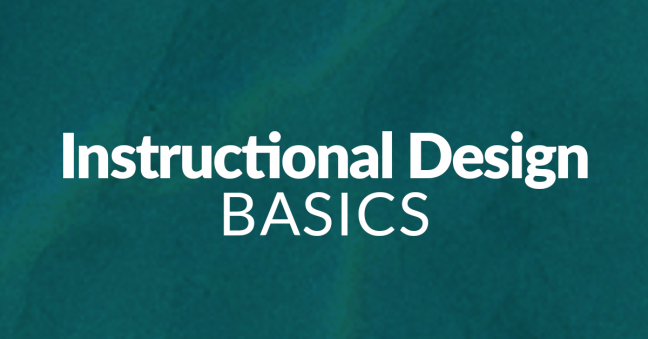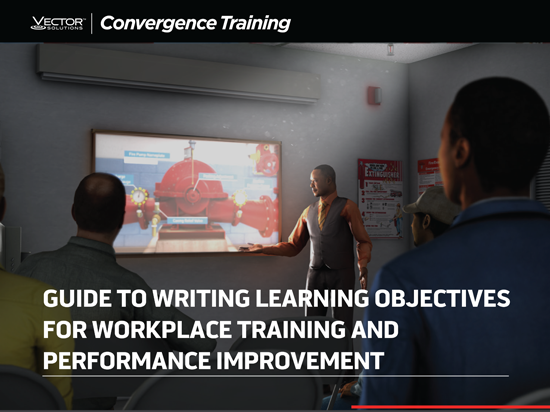
[This is the the seventh in a series of posts about learning objectives. We’ve now compiled all the posts into a single downloadable guide to writing learning objectives if you want to check that out.]
As we mentioned in an earlier post, Bloom believed there are three different kinds of learning: learning about things you can “know,” learning about things you can “do,” and learning about things you “feel.” We will refer to these as knowledge, skills, and attitudes, or “KSAs” for short.
In this post, we’re going to consider the “skills” domain more closely, looking at six different levels of skill. The information below is based on the theories of R.H. Dave (1975), and draws from explanations of those theories that appear at Don Clark’s well-known “Big Dog Little Dog” instructional design blog. Check out Clark’s material on learning domains to read more about this hierarchy and to learn about alternate versions of this hierarchy by Simpson and Harrow if you’re interested. I’ve written about Dave’s hierarchy because it’s the one that seems most useful to me, but the others are also popular, well-known, and well-regarded.
This information can help you create a more effective workforce training program.
- Learning Management Systems
- Online Workforce Training Courses
- Custom Workforce Training
- Incident Management Software
- Mobile Training Apps
Dave’s “Skill” or “Psychomotor” Domain of Learning Objectives
Dave includes five different levels of skill, from the most basic to the most advanced. We’ll list and explain each below, and we’ll give a list of behaviors that learners must perform to show they’ve mastered a skill at each level. This will help you pick the verb you’ll use when writing learning objectives dealing with skills.
Five Levels of Skills
Dave’s five levels of “skill” represent not so much different kinds of skills but rather different degrees of competence in performing a skill. The five levels, in order from most basic to most advanced, are:
- Imitation: Learner watches actions of another person and imitates them.
- Manipulation: Learner performs actions by memory or by following directions.
- Precision: Learner’s performance becomes more exact.
- Articulation: Learner can perform several skills together in a harmonious manner.
- Naturalization: Learner achieves high level of performance, and actions become natural with little or no thought about them.
The levels of the skills domain are often represented as different levels of a pyramid, with imitation, the simplest level, making up the bottom of the pyramid and naturalization, the most complex level, making up the top.

Creating Stronger “Skill” Learning Objectives
Now, let’s apply what we just discussed to the best way to write a “skills” learning objective. You probably remember that when you write a learning objective, one part of the objective describes a behavior the learner must perform, and this behavior is expressed as a verb. So, we can make it easier to write a learning objective by coming up with a collection of verbs that describe behaviors in each level of the skills taxonomy above. Check out the list below to get some ideas.
- Imitation: adhere, copy, follow, mimic, repeat, replicate, reproduce, trace
- Manipulation: act, build, execute, implement, perform, recreate
- Precision: calibrate, complete, control, demonstrate, execute, master, perfect, perform, show
- Articulation: adapt, combine, construct, coordinate, create, develop, integrate, modify
- Naturalization: design, develop, invent, specify
To see a longer list of skills-related verbs for your learning objectives, click here.
Keep these different levels of the “skills” in mind, and the verbs to use when writing learning objectives for each level, and you’ll not only create better learning objectives, you’ll create better training materials too.
Related Posts about Learning Objectives
You might also find any of these other articles learning objectives helpful:
- What Is a Learning Objective?
- Why Create Learning Objectives?
- The SMART Test for Learning Objectives
- Four-Part ‘ABCD’ Learning Objectives
- Bloom’s Taxonomy of Learning Objectives
- Cognitive Learning Objectives
- Psychomotor Learning Objectives
- Affective Learning Objectives
- Robert Mager’s Performance-Based Learning Objectives
For the free guide to creating learning objectives, just click the button immediately below.

How to Write Learning Objectives
Get this free guide to learn all you need to know to write learning objectives, create better training, and help improve workplace performance.

hello sir,
How can I apply this Dave’s psychomotor theory for tailoring skill learning
Dina,
Basically, the best way to do it (the most evidence-based way) is: provide a guided demonstration, showing how to do it, explaining common problems/mistakes, and pointing out “invisible” things like decision points; let the learner practice while you give real-time, helpful feedback; have the learner demonstrate mastery; build in opportunities for the learner to continue practice soon after on job and through spaced-practice training assignments.
Hope that helps!